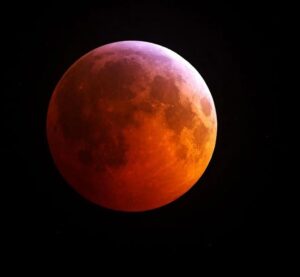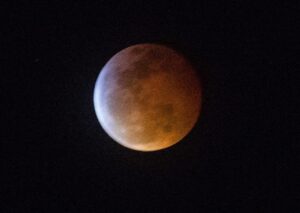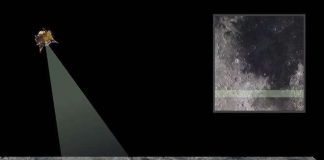MAY 15, 2022

Total lunar eclipse on April 15, 2014 as seen from the Mount Lemmon SkyCenter near Tucson, Arizona.
A total lunar eclipse that astronomers predict will be a “celestial theater” is happening on Sunday evening over Arizona.
Two factors make this eclipse worth seeing: The skies are generally clear over Arizona in May. And this eclipse happens Sunday evening, making it easy to fit into your weekend schedule.
“You couldn’t put together a better set of circumstances for us here in the Southwest,” said Adam Block of the University of Arizona Steward Observatory.
Lunar eclipses happen when the sun, Earth and moon align so the moon passes into Earth’s shadow. The moon gradually turns a dark orange or red, which is sometimes referred to as a “blood moon.” The more dust or clouds in the Earth’s atmosphere, the redder the moon appears.
Here’s how to catch the May 15 eclipse. All times below are Arizona times:
- 7:15 p.m.: The moon will rise in the east. At 7:27 p.m., you may begin to notice the eclipse. It will look as if a “bite” has been taken out of the moon. The bite will gradually get larger over the next hour.
- Over the next hour, more of the moon will appear dark orange or red until the moon becomes totally immersed in shadow at 8:29 p.m. This is called “totality.”
- Totality lasts 84 minutes until 9:53 p.m., when the moon begins to leave the shadow.
- The moon exits the Earth’s shadow at 10:55 p.m.
Kevin Schindler, historian at Lowell Observatory in Flagstaff, said the best views happen from roughly 7 p.m. to 9 p.m.
“For us in Arizona, you couldn’t make it a much better time.”
Best of all, you don’t need special equipment to see the lunar eclipse. Just your eyes or a pair of binoculars.
For those who want to learn more, Lowell Observatory will host a free online Total Lunar Eclipse Virtual Party from 7:15 to 8:15 p.m. on Sunday. Lowell will stream the eclipse live using a state-of-the-art telescope while staff members give presentations. Information is available here.

A lunar eclipse appears over Mesa, Ariz. January 20, 2019. The phenomena is otherwise known as a super blood wolf moon for its larger than normal size, the reddish color from the earth’s shadow and the name given to the full moon in January.
Lunar eclipses can also make for great photographs. If you want to photograph the eclipse, here are some tips:
- Use a camera and a tripod to help steady the shots.
- A camera with a zoom lens is helpful.
- Try to position your shot to get a cactus, tree or building in the foreground. This will help give depth and scale to the moon.
- The moon can be harder to photograph early in the eclipse because it’s so bright. But as the eclipse progresses and totally shadows the moon, it will be easier to capture the moon’s features.
In the Phoenix area, the Astronomy Association of Arizona at Verrado, will hold a public outreach event that is free beginning at 7 p.m. Sunday at Redmond Ball Field, 20895 W. Hamilton St., Buckeye.
The group will live stream the Lowell Observatory program, and seven telescopes will be set up onsite for viewing.










































































































